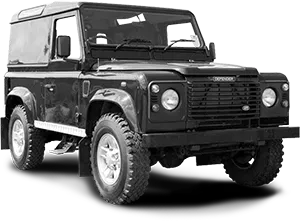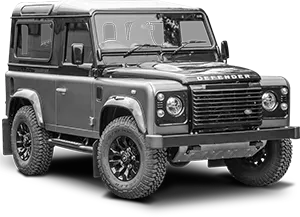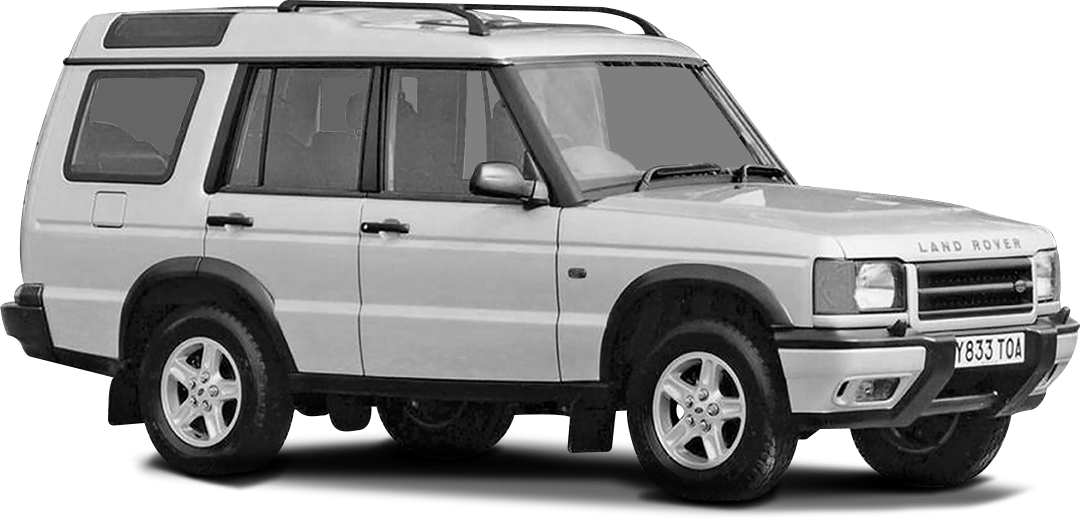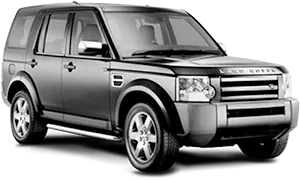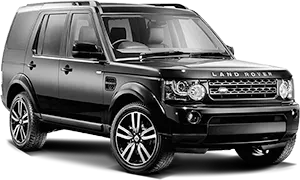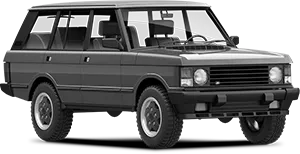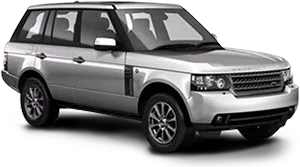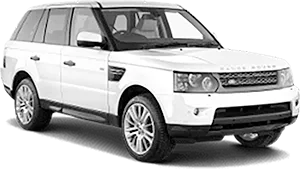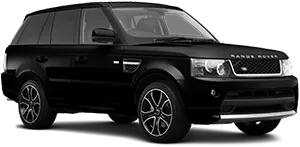
A Long Time Ago…
I remember it quite clearly. As a family we’d gone on our annual visit to the South of England Show, one of those great regional agricultural and country life shows that threw together the rural and town communities, a very British summer scene. As an impressionable young boy mad keen on cars, I most wanted to see the stand belonging to Caffyn’s, our local area’s British Leyland main dealer who always had a great display of cars – particularly Land Rovers, appropriately enough for a country show.
Not for the first time at the show, Caffyn’s had a switchback display track, rising to a height of probably 20 feet and then swooping to the ground again, over which a Land Rover would be driven, just slightly faster than it was comfortable to watch, first forwards and then backwards, as a demonstration of its supreme agility and unstoppability.
Only on this occasion the car was different… there was a good looking, big blue estate car that I’d never seen before, carrying out the switchback routine in place of the usual Land Rover.
When it reversed back over the hill to the starting point, I could read the letters across the tailgate, along with a white oval badge to the left of the number plate: ‘Range Rover’, they said, ‘By Land Rover’.
And that’s how, 55 years ago this last summer, I was introduced to the remarkable new Range Rover.
I still have the Range Rover showroom brochure that I picked up that day, having queued excitedly with other incredulous spectators to get one. Following the show, sales of the new car took off locally. Within a couple of years, anyone who was anyone turned up at the South of England Show in a Range Rover.
The 100 Inch Station Wagon Project
The Range Rover was long in gestation. It went through two iterations of ‘Road Rover’ designs between the early 1950s and mid 1960s, neither of which bear much if any resemblance to the finished car, before becoming the ‘100 Inch Station Wagon’ project, under the wing of Road Rover visionary engineer Gordon Bashford, engineer Spen King (to whom the lion’s share of the credit goes for the extraordinary dynamic ability and usability of the Range Rover) and stylist David Bache, who took Bashford and King’s design and finessed it into the familiar shape and detailing that has since been recognised all over the world.
The other vital ingredient in the Range Rover story was the fortuitous availability of the wonderful light alloy 3.5 litre V8 engine that the Rover Company had just purchased from Buick in America.
Once it was realised that this engine could be used in the 100 Inch Station Wagon project, the traditional Rover in-line four and six cylinder iron block engines that would otherwise have been used didn’t remain part of the project for long. The V8 offered power and particularly a lot of torque – very advantageous in off road vehicles and towing vehicles – in a compellingly attractive compact and light weight package that the other engines simply couldn’t get close to.
A Gap In The Market That No-one Else Had Seen
And so it came to be in 1970 that the Range Rover was unveiled to the world, to critical acclaim that’s followed it ever since. Those Range Rovers from the first couple of years, with their comfortable yet super-practical hose-down vinyl and rubber interiors, won the hearts of farmers, land owners and townsfolk alike, and every subsequent development of the car has continued to win more and more customers.
It’s a success story that’s rarely, if ever, faltered in the decades since and, in overall terms, still continues to grow.
The Range Rover, and the original Range Rover in particular, is now regarded as one of the milestones of motoring history, and, in terms of British contributions to motoring history, is arguably second only to the Mini. The Range Rover’s immediate success was due to it filling a gap in the market that no-one else had seen but had huge potential; once the Range Rover had very quickly demonstrated the need to fill that gap, the world wanted it.
The gap in question was for a vehicle that was highly competent off road and in utility use, like a Land Rover in fact, but which would be equally at home on the road in both rural and urban settings, and with the comfort of a quality saloon car.
The irony was that the coil spring suspension that gave the Range Rover the comfort of a road car also gave it more axle articulation and significantly better off road ability than the Land Rover with its leaf sprung axles, creating the supreme off road car. All this in a car with the most striking presence – and that trademark lofty driving position that road test journalists described as ‘imperious’.
The BL Years: Precious Little Reinvestment
Just as outstanding was the fact that Range Rover forged this gold plated reputation during the first ten years of its production life, which also happened to be the most tumultuous and fraught years of Rover’s then parent, British Leyland.
The 1970s were awful years of industrial unrest, disruption, factory closures and a resultant below-par build quality across the British Leyland combine.
What should have hurt the Range Rover further, but actually had less of a detrimental effect than it should have done by rights, was the lack of development and improvement to keep it ahead of the imitators and competitors that started to appear in the marketplace. Money that the Range Rover made throughout the 1970s was quickly hived off to fight fires in other areas of BL, and precious little was reinvested in the product.
This can be seen by the fact that it took 11 years of Range Rover production, right up to 1981, before a factory-built 4 door was available.
By then, a small industry of coachbuilders and other companies had been converting standard 2 door Range Rovers to 4 door for some years, such was the market demand for them. It took another year after that for automatic transmission, another hugely popular request, to be introduced. It wasn’t until 1986 that the Range Rover finally got a diesel engine option, which would help it sell so much more easily in export markets where fuel pricing and taxation favoured diesel.
Realignment – The Drive Upmarket
The realignment of the Range Rover towards a far more upmarket position and a much more lucrative pricing policy was made possible by the introduction of the 4 door model and automatic transmission. Granted, the Range Rover already had plenty of well heeled customers, but it would gain a whole lot more, very quickly, with these two introductions. Within a handful of years both the 2 door body and manual transmission became very much a minority of the build.
An ‘In Vogue’ limited edition – produced after a notably successful photo shoot featuring a Range Rover in Vogue magazine – equipped as standard with plenty of Range Rover optional extras, proved so popular that between then and 1984 another five runs of In Vogue models were produced, before the Vogue (without the ‘In’) became a normal production model.
Wood and leather interiors would, from now on, be the accepted norm in a new Range Rover.

America Finally Gets The Range Rover
For 1986, fuel injection was introduced for some V8 petrol models. Aside from creating an uprated 165bhp version of the V8 for top of the range models, fuel injection would make tuning the V8 for the stringent emissions regulations in North America much easier than if the engine was still fed by carburetters, an important point since it was planned to launch the car in North America very soon. Following the introduction of the 2.4 litre Turbo Diesel option later in 1986, the Range Rover was subjected to a minor facelift for 1987. The most easily spotted features were a new radiator grille with horizontal slats, replacing the vertical slatted pressed steel grille of all previous models, and a chin spoiler under the front bumper – more an item of fashionable styling than of practical use!
Also for 1987, Range Rover did indeed enter the USA, Canada and Mexico markets for the first time, only in 4 door form, and to huge acclaim.
Back at the launch of the Range Rover in 1970, it had been anticipated that the following year, in 1971, the car would go on sale in America – but it never happened, due for the most part because British Leyland just didn’t have the money to adapt the car to meet new safety and emissions regulations in that market. Roll forward 16 years, during which time the Range Rover had become a global success despite being denied sales in the world’s biggest car market, and a more promising financial climate in Rover Group, and it finally happened.
The response was immediate: America fell in love with the Range Rover.
Anti lock braking and enlargement of the V8 engine from 3.5 to 3.9 litres quickly followed and, in 1992, air suspension (preceding that to be used on the next generation Range Rover) arrived on the higher specification models, together with a further, even larger, version of the V8 – this time taken out to 4.2 litres. In another nod to the next generation Range Rover, a new long wheelbase variant with rear legroom more becoming of a luxury car was launched as the 4.2 LSE model. Meanwhile, the diesel Range Rover (not sold in America) had gone from the 2.4 litre to a 2.5 litre Turbo Diesel, both sourced from VM in Italy, then to the 200TDi diesel from concurrent Land Rover Defender and Discovery models.
The Range Rover Classic Curtain Call
For the 1995 model year, the new Range Rover – the car we often call the P38 or P38A model – was ready for launch. However, as has happened a few times with very popular cars over the decades in motoring history, there were reservations about how quickly all those customers who deeply loved the Range Rover would take to warm to the new car. The solution was for Rover Group to hedge their bets for a year, providing a reduced range of run-out Range Rover Classic models to sell alongside the new Range Rover. This ‘last throw of the dice’ for the original Range Rover did the trick, sales wise, while during the year customer acceptance and confidence grew for the new car.
There were significant visual changes brought in for the 1995 model year Range Rover Classic, naturally including ‘Classic’ badging but also more modern bumper mouldings replacing the steel pressed bumpers on most cars.
Most surprisingly, for this one year only, the 24 year old, little changed and by now very archaic, hard plastic moulded fascia was replaced by a modern soft feel fascia adapted from that in the Discovery – giving the 1995 Range Rover Classic its common nickname of the ‘Soft Dash’ model.
Under the bonnet, the 1995 model version of the V8 petrol engine was a one year only item, too, being a half way house amalgam of the traditional Range Rover V8 and the vastly updated V8 from the new ‘P38’ Range Rover. Meanwhile diesel versions of the 1995 Range Rover Classic received the new 300TDi engine that had been recently introduced in the Land Rover Discovery and Defender.

A True Icon of Motoring History
Come February 1996 and that was it for the Range Rover Classic. The last of line was driven off the track in the factory and presented to the Heritage Motor Centre, after 25 years’ production of a true icon of motoring history. Just over 326,000 original Range Rovers had been built in that time, an astonishing number for most types of car, let alone an off road 4×4 or a luxury carriage, the two roles that the Range Rover bridged between so successfully.
The new Range Rover, the ‘P38/P38A’, continued the run of success, though it never quite received the same love from the public as its predecessor during its seven year production life. In turn, in 2002, this model was replaced by an entirely new ‘L322’ Range Rover which brought much needed modernisation to the car, but managed to do so while still clearly, and very cleverly and warmly, paying homage to the original from 1970. The ‘L405’ series Range Rover ran from 2012 until 2021 and was followed by the current car, the ‘L460’.
Wonderful, world class cars, all of them – but none could ever have the impact on the motoring world that the completely original, one and only, Range Rover did back in 1970. Happy 55th birthday, Range Rover. Gosh, it can’t be that long ago I was there as a kid looking at it at the South of England Show? To my eye, the original Range Rover still looks timeless after all these years. I know I don’t.
Pete Taylor, Editor.


